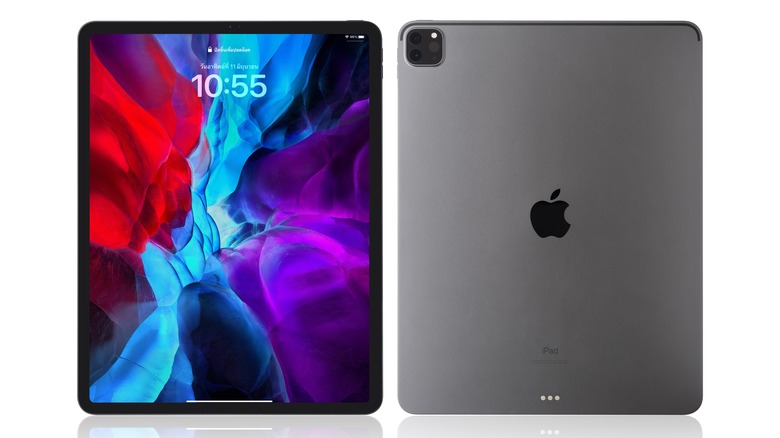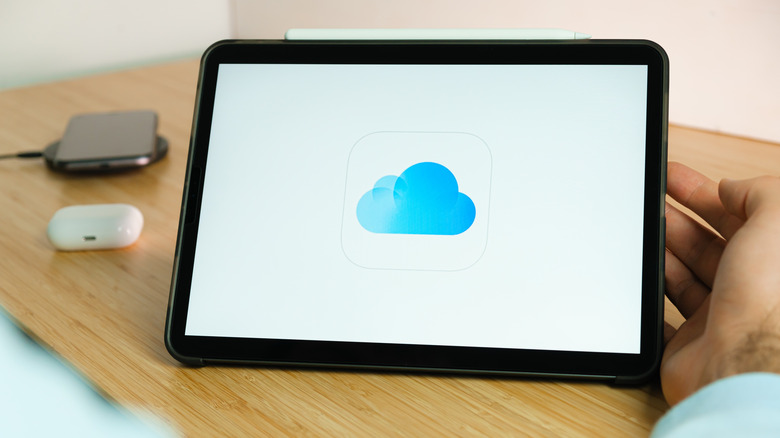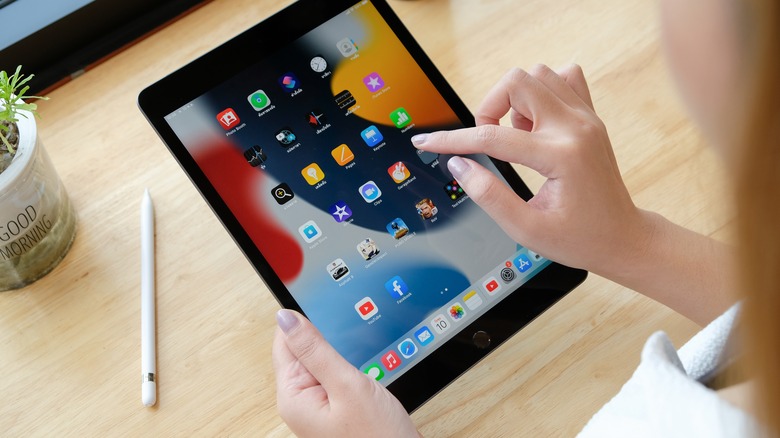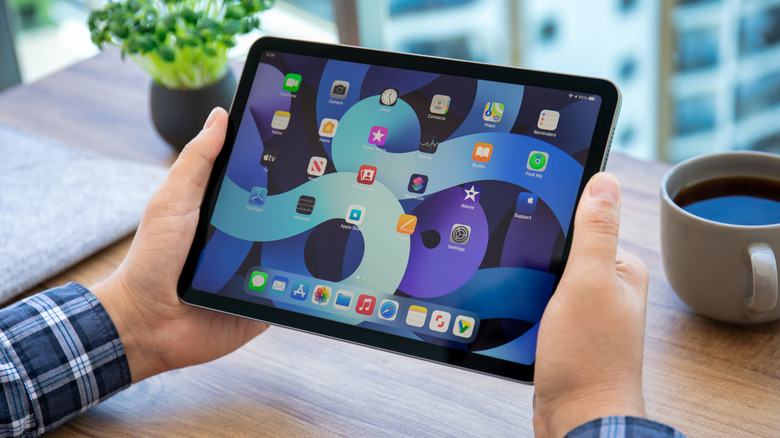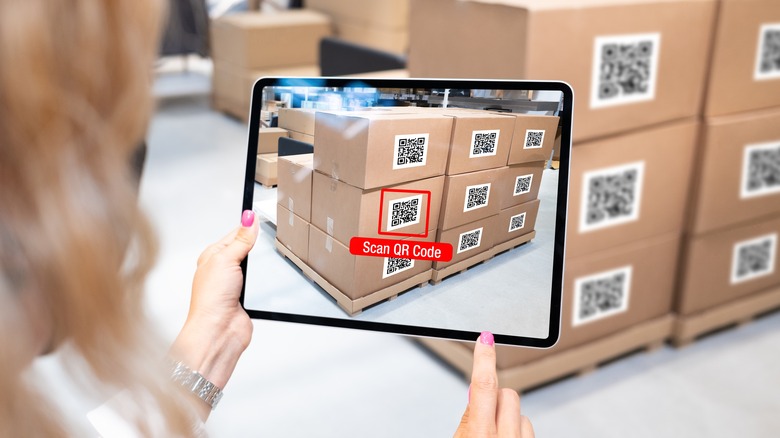5 Common Mistakes You're Making With Your iPad
Despite the fact that they have been around for 14 years now, iPads are still one of the stranger devices that Apple puts out. This isn't because of what they do or how they are used. iPads just do not have the same day-to-day applications that every other Apple product has. Where the iPhone, MacBook, and Apple Watch can come to feel like necessities for people, the iPad is still somewhat of an appendage that you only pick up for very specific things, like watching a movie on a plane, making digital artwork, or reading a digital comic book.
Due to this, there may be people out there not maximizing how they use their iPads, and more importantly, they may not be taking the best care of the tablet that they spent quite a lot of money to purchase. With this article, we will run down five ways that people either aren't making efficient use of their iPads or things they do with their iPads that there really is no reason to — particularly if you have other Apple devices at your disposal. There are plenty of terrific features on the iPad, but this guide will focus on things a bit more on the practical side of things.
Not using iCloud enough
When buying an iPad, you will quickly learn that storage comes at a premium. If you choose between a regular iPad or an iPad Air, each comes with only two storage options. The first is 64 GB, which is not a lot of space, and the second is 256 GB, which is much more space but also costs significantly more money. That doesn't even bring into the equation the iPad Pro, which costs more at its lowest than the others at its highest.
So, if you are someone who doesn't want to plop down those massive upfront charges but needs significant space to store things, using iCloud is an excellent option. There are people who want to use other third-party cloud services like Dropbox, but having a cloud seamlessly integrated into your system makes things so much easier. Even better is that it perfectly integrates with all your other Apple devices. If you want to get the most bang for your buck, there's also the Apple One subscription, which includes expanded iCloud storage and Apple Music, Apple TV+, Apple Fitness+, and more. iPad files can be quite large, so not taking advantage of this storage option would be a major misstep.
Not managing storage
Since space can be so precious on iPad, having cloud storage sometimes isn't enough, as you find yourself suddenly without space to download something even though you feel like you haven't downloaded much onto your tablet. Generally, we do not use iPads as often as we do iPhones or MacBooks, so we may not be as cognizant about how much space is being used on our iPads at all times.
This advice is true for other devices too, but it is especially important on an iPad. Regularly audit how much storage space you have used and find where things can be easily deleted. For instance, you downloaded a movie to watch on your iPad but forgot to remove the download after watching it. Maybe you unknowingly have automatic downloads enabled for your podcast app, and even though you only use that app on your iPhone, the podcasts continue to download to the iPad anyway.
Every so often, go into your Settings app and see how storage space is being allocated on your iPad. You may be surprised how easy it can be to whittle that number down to free up space.
Not managing apps across devices
One of the more annoying ways storage gets taken up on your iPad is that it downloads apps that you didn't intend to download for the iPad. How could you download something you didn't want to download? Well, it's because you downloaded it on another device. There is a setting with apps downloaded universally across your devices, even though you only intend to use that app on one of them. Some apps work great on iPhones but not on iPads and vice versa.
If you go into your Settings app and scroll down to the App Store tab, you will see a toggle that says App Downloads. If that is toggled on, that means you want every app you download to go to all of your devices. You should turn that off, even if there are apps you want everywhere. Each of our Apple devices is its own experience, and curating your iPad with what apps you have on it and how they are arranged is important for our daily use. Not only will you be circumventing unwanted storage build-up on your iPad that you didn't authorize, but you will also make sure you have your iPad exactly how you want it.
Taking photos with it
Since the iPad has a large, high-resolution screen, you would think the photos you take with the tablet would be of higher quality than those you take on the smaller iPhone. This is not the case, especially if your iPad is just a standard and not a Pro. The camera on the iPad is okay. It is a 12 MP camera with a wide-angle lens and an f/1.8 aperture. The iPad Pro also comes with an even wider lens with a f/2.4 aperture that is just a 10 MP resolution. These images are not worth the annoying hassle of holding up and stabilizing an iPad to take a photo.
Compare those numbers to the iPhone 15. Its main camera has a 26-millimeter lens with an f/1.6 aperture that has the ability to take photos with 48 MP resolution, quadrupling the resolution of the iPad, which also accounts for image stabilization. Not only that, but the iPhone also comes with two additional lenses, a wider 13-millimeter lens and a longer 52-millimeter lens, that take pictures at a 12 MP resolution. Instead of digital zoom-ins and outs that the iPad has to do, which can muddy up the image quality, the iPhone can seamlessly switch lenses depending on how you take the picture. If you want to capitalize on shooting things from far away, the Pro and Pro Max models have lenses that go up to 77-millimeter and 120-millimeter, respectively. Between the iPad and iPhone cameras, there's no competition. There is no need ever to take a picture with your iPad again.
Not keeping track of where it is
The iPad is the one Apple device that it can easily keep track of. We tend to keep iPhones on our person at all hours of the day, and the same goes for the Apple Watch. MacBooks are so large that we tend to know exactly where they are, be it on our desks or in a specially designed bag for laptops. iMacs and Apple TVs basically stay in one spot forever. Then there's the iPad, which is something we use on and off. We may go days without picking it up because so much of our time is spent on other devices more easily at the ready.
Having a designated spot where you keep your iPad is extremely important. Not only does it make it easier to grab it when you need it, but it can also be a big help in not damaging the tablet. If you leave it somewhere you don't remember; it could be in an environment that is too hot or too cold, which could damage the device. It could accidentally be in a spot that allows it to get damaged accidentally. An iPad is not inexpensive, and you should take care of it if you want to make it last.
